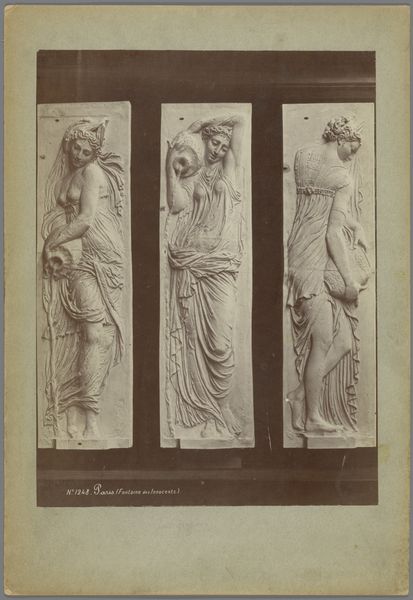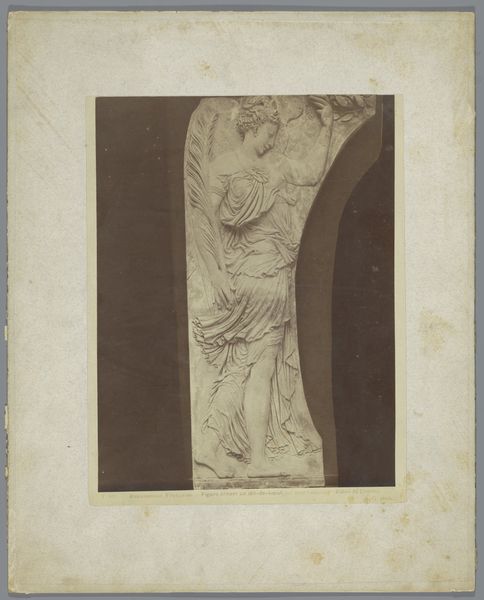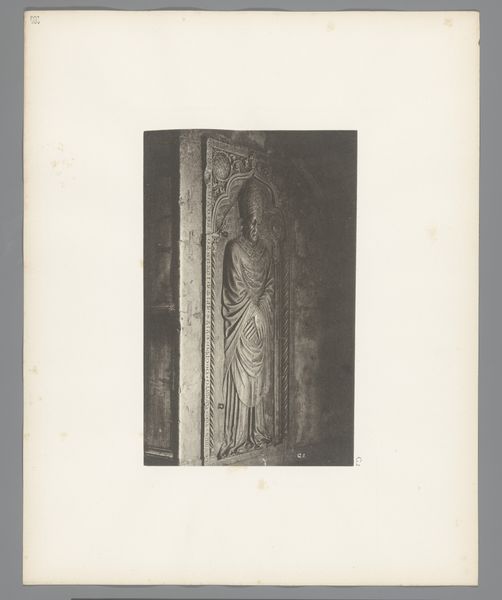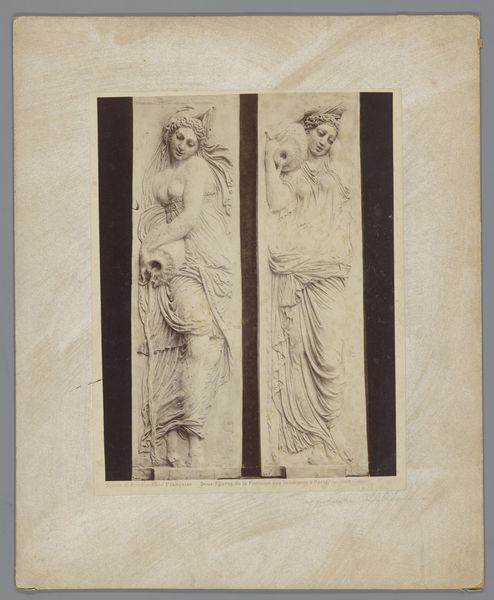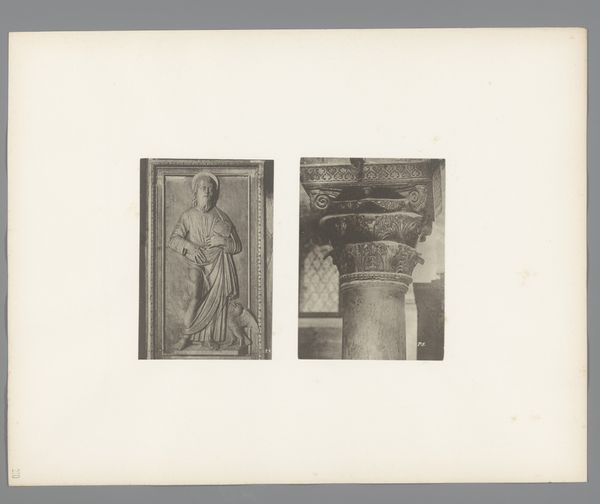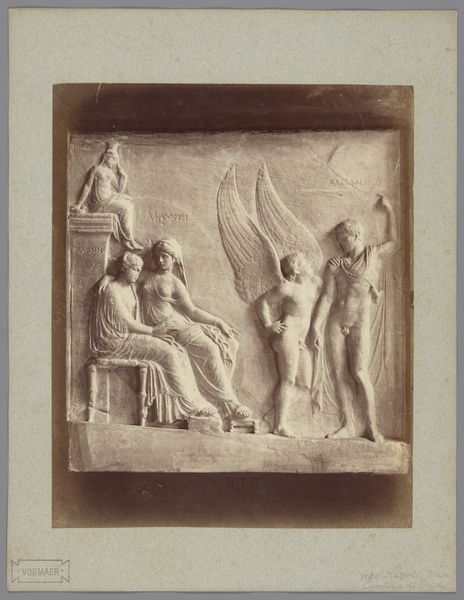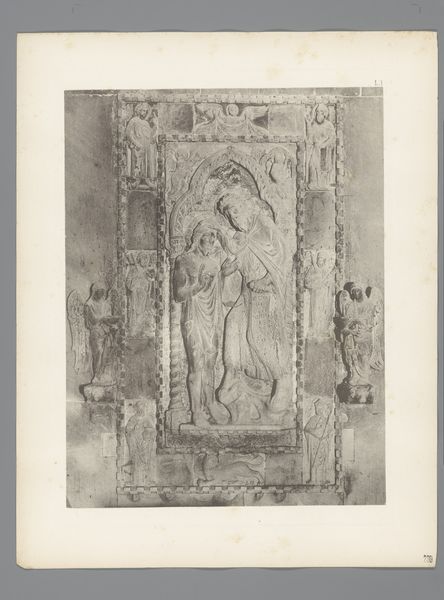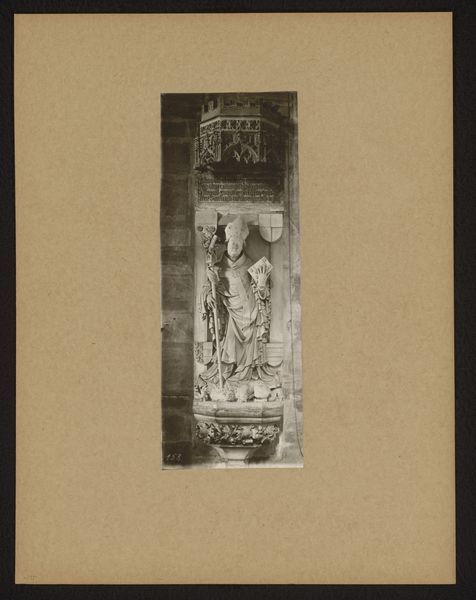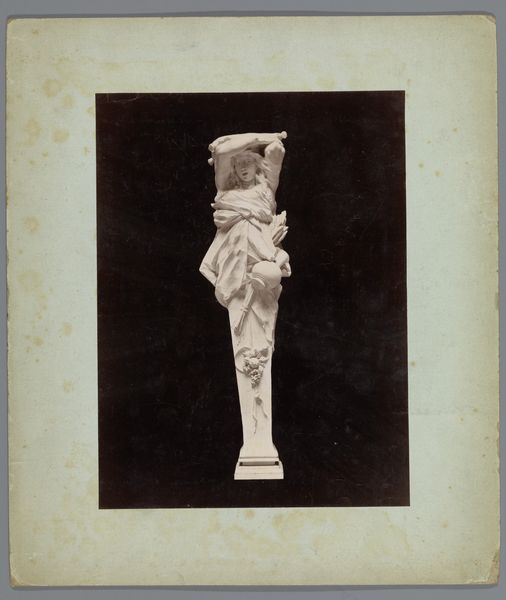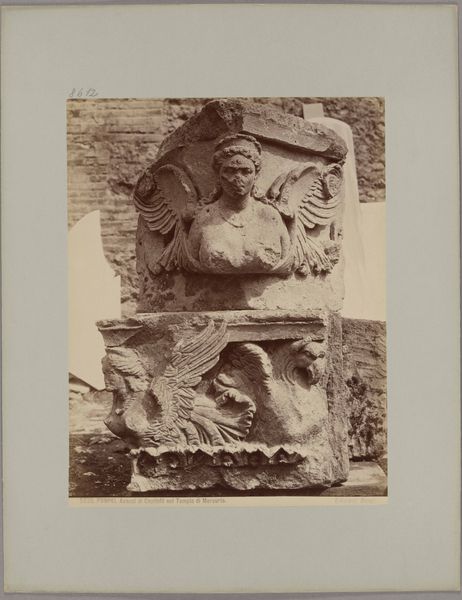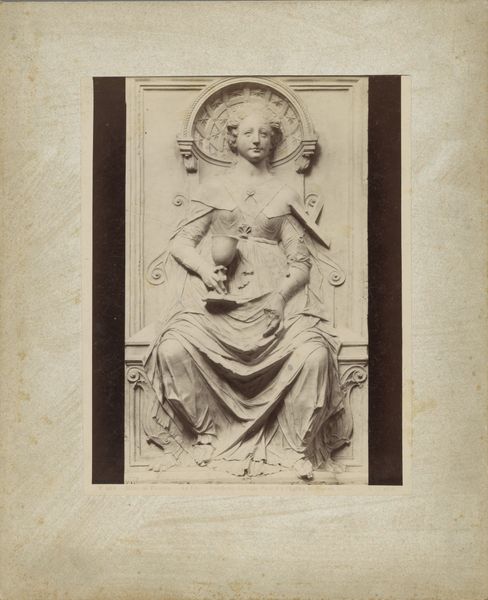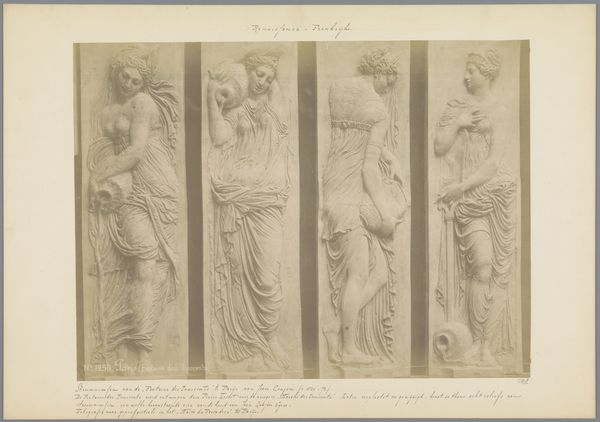
Mogelijk afgietsel van nymphen als afgebeeld op de Fontaine des Innocents te Parijs 1850 - 1900
0:00
0:00
photography, sculpture, gelatin-silver-print
#
portrait
#
classical-realism
#
figuration
#
photography
#
ancient-mediterranean
#
sculpture
#
gelatin-silver-print
Dimensions: height 357 mm, width 502 mm
Copyright: Rijks Museum: Open Domain
Curator: This gelatin silver print, dating from sometime between 1850 and 1900, presents what's believed to be casts of nymphs from the Fontaine des Innocents in Paris. The photograph is credited to Médéric Mieusement. What are your first impressions? Editor: They strike me as melancholic, frozen somehow, not in time but in feeling. There’s a distinct lack of dynamism—a posed quality to their suffering, perhaps. Curator: An interesting point, considering these are representations of nymphs—figures often associated with vitality. Given that this is a photograph of casts, the texture is particularly noteworthy. It seems the photographer was keen on documenting the specific features of the casts themselves, perhaps even the marks left behind by the process of replication. Editor: Yes, and this photograph flattens the experience. We lose the sensation of cool stone beneath our fingers, the weight of the material, even the nuances of light as it plays across three-dimensional surfaces. Instead, we're left with a mediated experience—a representation of a representation. One wonders about the labor involved, too, from the initial carving of the sculptures to the act of photography and subsequent printing process. The amount of material extraction alone is truly staggering. Curator: It’s a fascinating convergence of the old and the new, isn’t it? The classical rendered through a photographic lens, bringing it into the modern era. I'm particularly drawn to the almost ghostly quality the silver gelatin print lends them. They feel both present and absent, solid and ethereal, caught between worlds. Editor: Indeed, the choice of gelatin silver print transforms what would have been public art into something precious, handled, viewed intimately. This contrasts sharply with their original purpose as civic ornaments intended to refresh weary citizens or, more sinisterly, reinforce public power. The nymphs, once sources of literal or figurative sustenance, become rarefied commodities, photographic studies to be collected. Curator: It highlights the complicated relationship between art, reproduction, and value. Looking at these replicated nymphs through Mieusement's lens really brings to mind the stories and meanings we project onto them. A poignant reminder that art changes shape with time. Editor: I agree. Focusing on materials reminds us how easily classical forms are recontextualized into modern consumables with each translation further eroding our understanding of what these objects once were.
Comments
No comments
Be the first to comment and join the conversation on the ultimate creative platform.
